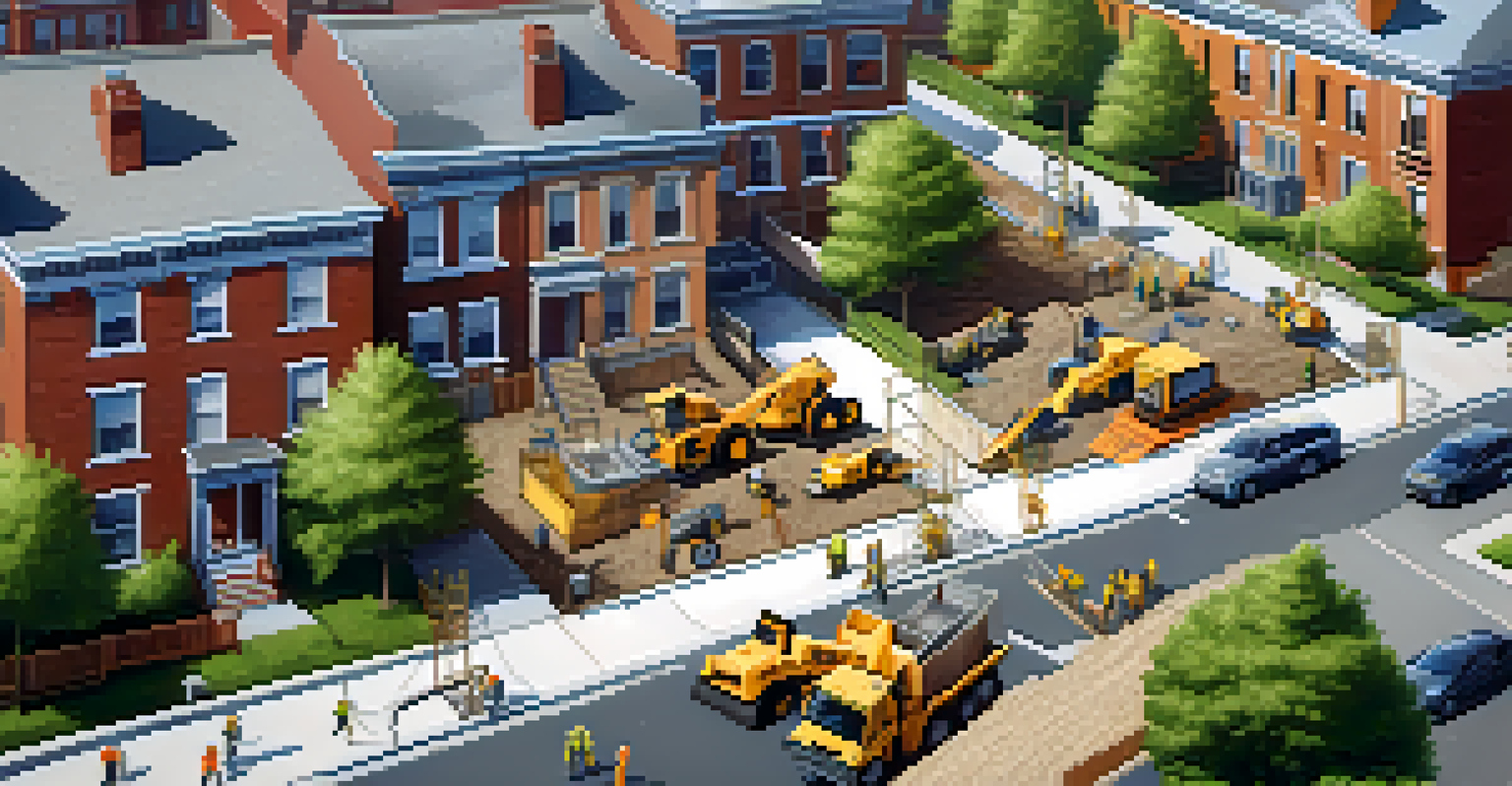Affordable Housing: Infrastructure Challenges in NYC

Understanding Affordable Housing in NYC's Context
Affordable housing in New York City is more than just a roof over one's head; it's a pressing need for many residents. With soaring rent prices, a significant portion of the population struggles to find suitable living arrangements within their budget. This situation is not just about economics; it's also about social equity and community stability.
Affordable housing is not a privilege but a right that must be accessible to all.
The term 'affordable housing' generally refers to homes that are affordable to those with low to moderate incomes. In NYC, this often translates to a complex web of policies, programs, and sometimes, long waiting lists. Understanding this context is crucial as we delve into the infrastructure challenges that affect these housing solutions.
As the city's population continues to grow, the demand for affordable housing has never been greater. Unfortunately, this demand outstrips supply, creating a situation where infrastructure must evolve to keep pace with these housing needs.
The Role of Infrastructure in Housing Development
Infrastructure plays a vital role in housing development, influencing where and how quickly new homes can be built. Elements such as transportation, utilities, and public services are critical in making a neighborhood livable. In NYC, where space is at a premium, the interplay between housing and infrastructure becomes particularly significant.

For instance, areas with robust public transit options are more attractive for affordable housing projects, as they connect residents to jobs and essential services. However, when infrastructure is outdated or underfunded, it can hinder new developments or lead to increased costs that are passed on to residents.
Affordable Housing Demand Surges
The growing population in NYC is driving an unprecedented demand for affordable housing amid soaring rent prices.
Thus, a well-planned infrastructure system not only supports current residents but also lays the groundwork for future housing projects. Without these foundational elements, the goal of creating affordable housing becomes increasingly difficult.
Current Infrastructure Challenges in NYC
New York City faces a myriad of infrastructure challenges that impact its affordable housing initiatives. Aging subway systems, limited road capacity, and inadequate utilities are just a few of the obstacles that slow down development. This often results in delays and increased costs for housing projects, ultimately affecting affordability.
Infrastructure is the backbone of any community; without it, we cannot hope to build the future.
Moreover, neighborhoods that are historically underserved may lack the infrastructure necessary to support new housing developments. This can create a cycle of neglect, where investment is directed to areas with existing infrastructure, leaving other communities behind.
As a result, addressing these infrastructure challenges is critical for any effective affordable housing strategy. Without improvements in these areas, the dream of affordable living in NYC remains just that—a dream for many.
Funding and Investment in Infrastructure Projects
Investment in infrastructure is essential for fostering affordable housing in NYC. However, funding such projects often presents a significant challenge. Government budgets can be tight, and competing priorities may push infrastructure improvements down the list.
Public-private partnerships can be a viable solution, bringing together resources from both sectors to finance necessary upgrades. These collaborations can help to leverage private investment for public good, allowing for a more robust housing strategy that includes infrastructure development.
Infrastructure Impacts Housing Growth
Aging infrastructure and limited resources hinder the development of affordable housing projects across the city.
Furthermore, innovative funding models, such as social impact bonds, can also mobilize resources for infrastructure improvements. By attracting investments based on measurable outcomes, these models can provide the financial lifeline needed to support housing initiatives.
Community Engagement in Infrastructure Planning
Community engagement is crucial when planning infrastructure projects related to affordable housing. Local residents often have invaluable insights into their neighborhoods, and their involvement can lead to more effective solutions. By incorporating community feedback, planners can better understand the needs and priorities of those directly impacted.
Additionally, engaging with residents fosters a sense of ownership and accountability, making it more likely that infrastructure projects will be successful. When communities feel heard, they are more likely to support initiatives aimed at improving their living conditions.
Moreover, transparent communication about infrastructure projects helps to build trust between residents and city planners. This collaboration can ultimately lead to better outcomes for affordable housing and infrastructure development.
Innovative Solutions to Infrastructure Challenges
Innovative solutions are emerging to address NYC's infrastructure challenges and support affordable housing. For example, utilizing smart technology can optimize traffic flow and improve public transit efficiency, making neighborhoods more accessible. Such advancements can help to alleviate some of the pressures on housing development.
Additionally, modular construction techniques are gaining traction as a way to build homes quickly and cost-effectively. These methods can reduce construction time and minimize disruptions, allowing for faster delivery of affordable housing options.
Community Input Enhances Solutions
Engaging local residents in infrastructure planning leads to more effective and sustainable solutions for affordable housing.
Furthermore, green infrastructure—like parks and sustainable drainage systems—can enhance community spaces while also addressing environmental concerns. By integrating these innovative approaches, NYC can create a more sustainable future for affordable housing.
The Path Forward for Affordable Housing and Infrastructure
The path forward for affordable housing in NYC hinges on addressing infrastructure challenges head-on. It requires a concerted effort from government agencies, community organizations, and private developers to create a collaborative approach. By coming together, stakeholders can identify key areas for improvement and prioritize investments accordingly.
Moreover, ongoing advocacy for funding and policy changes is essential to ensure that infrastructure improvements align with housing needs. This includes pushing for more equitable distribution of resources to underserved neighborhoods, where the impact of infrastructure investments can be most profound.

Ultimately, a comprehensive strategy that integrates affordable housing and infrastructure development will benefit all New Yorkers. By fostering a more connected and sustainable city, we can work towards a future where everyone has access to safe and affordable housing.